Florentino Perez is arguably the football world’s most recognizable club president. Over two separate terms at Real Madrid, Perez has presided over the growth of the club as a global icon. However, it can also be said that Perez’s personal fame is more or less down to the mistakes he has made during his tenure. The architect of the ‘Galactico’ policy has learnt quite a lot of things the hard way. Here are the six biggest mistakes he has made during his presidency at Real Madrid.
#6 Selling Sneijder and Robben

It was the summer of 2009 and Florentino Perez had just been elected unopposed to the post of Real Madrid president again, three years after his resignation. Fans had been waiting for this; they were hoping Perez the Saviour would lift the club back to the top after the dominance of the Pep Guardiola-led Barcelona the past season. Perez duly came and did what he knows best: buy the best players. In came Cristiano Ronaldo, Kaka, Xabi Alonso and Karim Benzema.
Now the issue here isn’t whether the four players named above are great players or not; it’s to do with who had to leave the team in order to accomodate them and balance the books. Wesley Sneijder and Arjen Robben were two of the most outstanding players in the Real Madrid teams that won the league twice after Perez’s departure in 2006. In these two Dutchmen, Real Madrid had world-class quality. Most importantly, these were two men who desperately wanted to stay in the team. Why did they have to go? How much of a say did Manuel Pellegrini have in these decisions? These are questions that still occasionally pop up in Madridista discussions. Apparently, despite the fact that Sneijder and Robben were determined to continue in Madrid, they were not ‘Galactico’ enough for Perez’s liking. Having sold them off to Inter Milan and Bayern Munich respectively, Perez may have felt that he was doing the right thing. However, he couldn’t be more wrong: the point was spectacularly driven home when Madrid’s Champions League campaign faltered in the round of 16 as usual, while Bayern Munich and Inter Milan went on to the final, to be played in the Santiago Bernabeu of all places. That Sneijder and Robben were the leading players for their teams would be a proper slap in the face of Florentino Perez, showing him exactly what he had missed.
#5 Interference in team managament
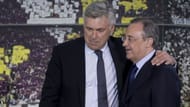
This is one of Perez’s favourites. He never ceases to interfere in matters that should ideally be restricted to the coaching staff. All the coaches who have come and gone during his presidency will bear witness to that.
From Vicente Del Bosque to Carlo Ancelotti, each man will have a story to tell about how they ended up having to choose from players they never wanted to buy or how they had to drop or sell players they wanted to play. Perez had his own ideas regarding team selection. There have been a number of occasions where he is alleged to have dropped players to the bench. Portuguese midfielder Luis Figo was asked if it happened to him and he replied: “Yes, it did happen to me, no doubt about it. But it’s in the past and I move on from that. There’s no issue. I’ve already spoken my feelings. I was calm when I left [Real Madrid]. Everything comes to an end; you move on and look for happiness elsewhere.”
If Perez felt that certain players were opposed to his plans, those players would be forced to move. Club legend and captain Fernando Hierro was one such casualty in 2003. Although he is now back in the club in a coaching capacity, it was a pretty shocking decision back then.
Perez may have a lot of achievements to boast about, but it isn’t difficult to see that his interference in team management played a significant role in affecting the balance and spirit of the squad.
#4 Selling Makelele
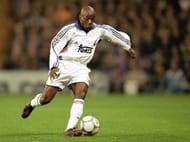
Back in the first Galáctico era at the Bernabéu, Claude Makelele was a crucial player in the Los Blancos’ lineup. Since moving there from Celta Vigo, he had blossomed into one of the best defensive midfielders in the world. But despite that he was underpaid, earning only a fraction of what the likes of Zidane, Beckham, Figo and Ronaldo did. One report suggested that Becks earned five times Makelele’s salary. Egged on by his teammates, Makelele approached Perez for a pay rise. Perez refused and Makelele was on his way out.
History is witness to the fact that for the next 4 years, Los Galacticos huffed and puffed but failed to win a trophy. Meanwhile, Makelele became the anchorman as Chelsea started filling their trophy cabinet. The younger players Perez had predicted would replace him never came. The enormity of Makelele’s departure and the void he left was perfectly summed up by ex-Real captain Hierro as follows:
#3 Firing Del Bosque
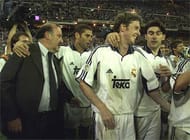
The firing of coach Vicente Del Bosque in the summer of 2003 baffled players, fans and pundits alike. People had trouble understanding why Florentino Perez would give the boot to a manager who had led the club to domestic and continental supremacy (twice).
Del Bosque's team at that time was one of the best in the world at the time, with superb quality in all departments. The ex-Blancos player had been able to understand what it meant to be Real Madrid. If it was President Perez who had recently brought in two superstars in Zinedine Zidane and Ronaldo, it was Del Bosque who had successfully built a team around them. The team had brought in laurels, most prominent among them a third Champions League in five years. Most importantly, the manager commanded respect in the dressing room; he could count among his closest supporters senior players like Fernando Hierro, Steve McManaman and Fernando Morientes.
“I don’t understand what happened at that moment. When we were celebrating La Liga title, he just fired him.” – Brazilian striker Ronaldo
#2 Flawed Galactico policy
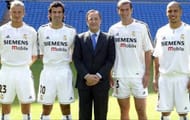
This has been the most notable feature of the Perez era, so much so that the words ‘Galactico’ and ‘Perez’ are seen to go hand in hand. Initially, when it all started off, it wasn’t so bad. Signing one superstar every summer did not have the same connotations that it does today. In his first year in office, in 2000, Perez fulfilled a promise to sign Luis Figo from rivals Barcelona. He was followed by Zinedine Zidane and Ronaldo in the next two seasons. Until this point, it seemed things were fine; Real had a superb team that everyone would envy and was the toast of the world. However, it would only last for a short while. Perez’s insistence on buying whoever was considered popular in the market would mean that Los Blancos ended up with a lot of players they did not need, and missed out on many others who would have fit in well.
Before it was termed as the ‘Galactico’ policy, it was first known as the ‘Zidanes y Pavones’ policy. This was after Perez had promised to fill his team with the best attacking talent the world had to offer, while filling in the rest of the positions with players from the Madrid youth team. It didn’t work out. There would be a massive imbalance in the squad, which was creaking under the weight of too many attacking players. Defensive reinforcement lay forgotten and ignored. Perez was once asked by a journalist how he’d form his ideal lineup, and he named a team which had Zidane at centre-back and David Beckham at right-back. When the President finally woke up to the problems, he tried to buy his way out but the players who came were not good enough; Jonathan Woodgate, Thomas Gravesen and Walter Samuel all flopped.
Amidst all this, a number of potential stars passed through the club’s academy, slipping under the radar as they couldn’t fit in among the Galacticos. In this way, Perez and Real Madrid missed out on players like Samuel Eto’o, Juan Mata, Filipe Luis and Juanfran.
Last but not least, there was an allegation that Perez took several transfer decisions based on marketing reasons rather than footballing ones. Claude Makelele claimed that his departure was because of Perez’s belief that he wouldn’t sell shirts. Then there was David Beckham, who Perez preferred to Ronaldinho because he had better looks.
#1 Transfer policy of summer 2014
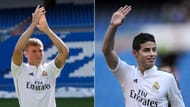
After all that happened during Perez’s eventful tenure, there were many in the footballing world who thought that the La Decima was the beginning of great new era in Real Madrid’s history. They thought that Perez had finally learnt his lessons. It wasn’t to be. The capture of the elusive tenth Champions League was undoubtedly a high point in Perez’s presidency but now it seemed that he was as determined as ever to fall victim to his own self-destructive tendencies. After successfully dismantling the team that won the Champions League and La Liga with Vicente Del Bosque a decade ago, Perez was now ready to do the same to the team that won La Decima. A couple of months after the final, Perez had sold two of the team’s most significant contributors – Angel di Maria and Xabi Alonso. Just as Makelele before him, Alonso’s departure left a gaping hole in midfield. Sami Khedira was out injured while Asier Illaramendi never seemed up to the task. To make matters worse, Casemiro, a potential fututre replacement was packed off to Porto. Agreed, Alonso pushed for his transfer but then Perez could have at least brought in a world class defensive midfielder as a replacement but that didn’t happen. What happened was that Real splashed the cash on two of the World Cup’s standout attacking performers. Out went the Champions League final man-of-the-match Angel di Maria. Toni Kroos and James Rodriguez are fantastic players, there are no second thoughts on that. The question is: how can they replace the industry and defensive workrate of Di Maria? How do they fit into the current lineup? That’s not Perez’s problem though. That’s a headache for Carlo Ancelotti to deal with.
Of all the mistakes that a person can do, the worst are the ones that are repeated. If Perez has learnt nothing from the struggles that followed the ninth European triumph, then Madrid fans can only wait and watch with concern what will happen after the tenth.
